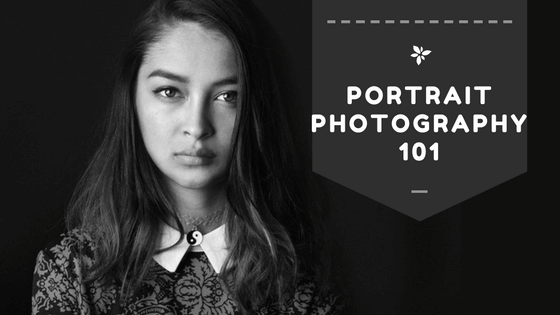A good portrait is, of course, all about the subject. Your main job as photographer is both to make your subject look and feel amazing, and to capture something unique about that person, so that when their family and friends (those that know them best) look at the portrait they will see something wonderfully familiar in the image.
Of course, we’re here to learn what is actually going on with the camera to create such a perfect moment. Here are a few practical tips for lining up the perfect portrait. We can set the scene; find that magic that truly captures a person, is up to you!
Photograph in Their World
Some people will simply never feel comfortable in a studio, and under the bright lights and controlled environment they’ll come out stiff and awkward every time. Don’t fight it. Instead of trying to direct your subject to death, ask them to take you into their world and photograph them where they are in their element. A craftsman in his workshop, and gardener with her hands in the dirt, a parent playing with their kids instead of forcing them to sit still for the camera — these will often be the most meaningful and true images you can capture, even if the “action” doesn’t make it into the final shot.
Get Absorbed
Even if your subject doesn’t have some picturesque hobby, try to make them forget that they are being photographed. Have you ever been told to pose and found that you suddenly can’t remember what you do with your hands each and every day? Give your subject something to do to occupy their hands (props can work miracles!) or step out from behind and start a conversation simply as two people, not artist and subject. If you can get someone absorbed in what they are doing, or get them talking about their passions, you can snap a photo in that little moment when they are entirely unposed and simply engaged. That twinkle in the eye can’t be faked.
Connect
This often means you’ll have to take the time to really connect with your subject. Spend some time just chatting before the camera even comes out. Let them air their nervousness if they aren’t used to being in the limelight, and share a little about yourself, too. See if you can find some common ground. If you subject feels relaxed and comfortable with you before you duck behind the lens, you’ll be much more likely to capture them looking naturally happy instead of stiff.
Don’t Draw Attention
That being said, never tell a subject to loosen up! There’s no fast way to ruin a shoot than to point out that the model looks stiff — it always backfires! Some people make better models than others, but ultimately that’s not the subject’s fault. Rather, it’s your job to help them loosen up and coax out a candid expression.
I’m not a fan of the technique of pretending that you aren’t taking pictures, either. The subject knows they’re under scrutiny, and yes, they notice you snapping away. Pretending you aren’t only makes them more aware. Instead, try to make light of the situation by joking about the camera and your job.
Overexpose
This is one of the few times I’d advocate this cardinal sin, but it does have it’s place. A bright image can make a portrait look clean, bright, and beautiful.
Focus on the Eyes
Literally. Make sure the subject’s are crisp and sharp, or the entire image will lack that dynamic, arresting something, even when the lighting, composition, and facial expression are perfect. Don’t ruin a great shot by letting the eyes slip out of focus!
Try Black and White
While it can be overused and cheesy, sometimes changing a photo to black and white can give it something special. Especially for closeups with minimal background, color can sometimes serve as a distraction from the real subject, and removing it throws all the emphasis on the subject. While some pictures simply become less interesting in black and white, an excellent portrait will often come alive.
Don’t Compete With the Background
If your subject is wearing brightly colored clothing, dramatic makeup, or an elaborate hairstyle, don’t add anything extra into the shot to compete with the drama of the subject themselves. Go for a plain, minimalistic background. By the same logic, a simple look with neutral toned clothing will often pop against a brightly colored background. If you need to, don’t be afraid to let the background blur a little to throw the subject into sharper relief.
Practice!
Portraits can be a particularly difficult art, and like anything practice is key! Don’t worry about setting up elaborate, expensive shoots. Just ask you friends and family to sit for you. In fact, it can be even better to practice with people you feel comfortable with, so you can study your own behavior and later capture that same ease with strangers. If you’ve already pressed your luck asking for favors from your household, don’t worry! Almost anyone can be a model, and many people are more than willing to help out if you offer to send them copies of the best shots. You can have a surprising amount of luck even approaching strangers out in public if you sweeten the deal with free headshots. If you intend to use these shots in the future, though, make sure you get a release from the model so that they don’t go to waste!
Location
I’ve talked a lot about finding natural backgrounds, but every subject is different. Not everyone feels comfortable inviting you into their private spaces, so sometimes another out-of-studio location is more appropriate. Here are a few simple rules for finding the perfect spot for the shoot.
Click here for more tips on the technical side of creating the perfect portrait.

